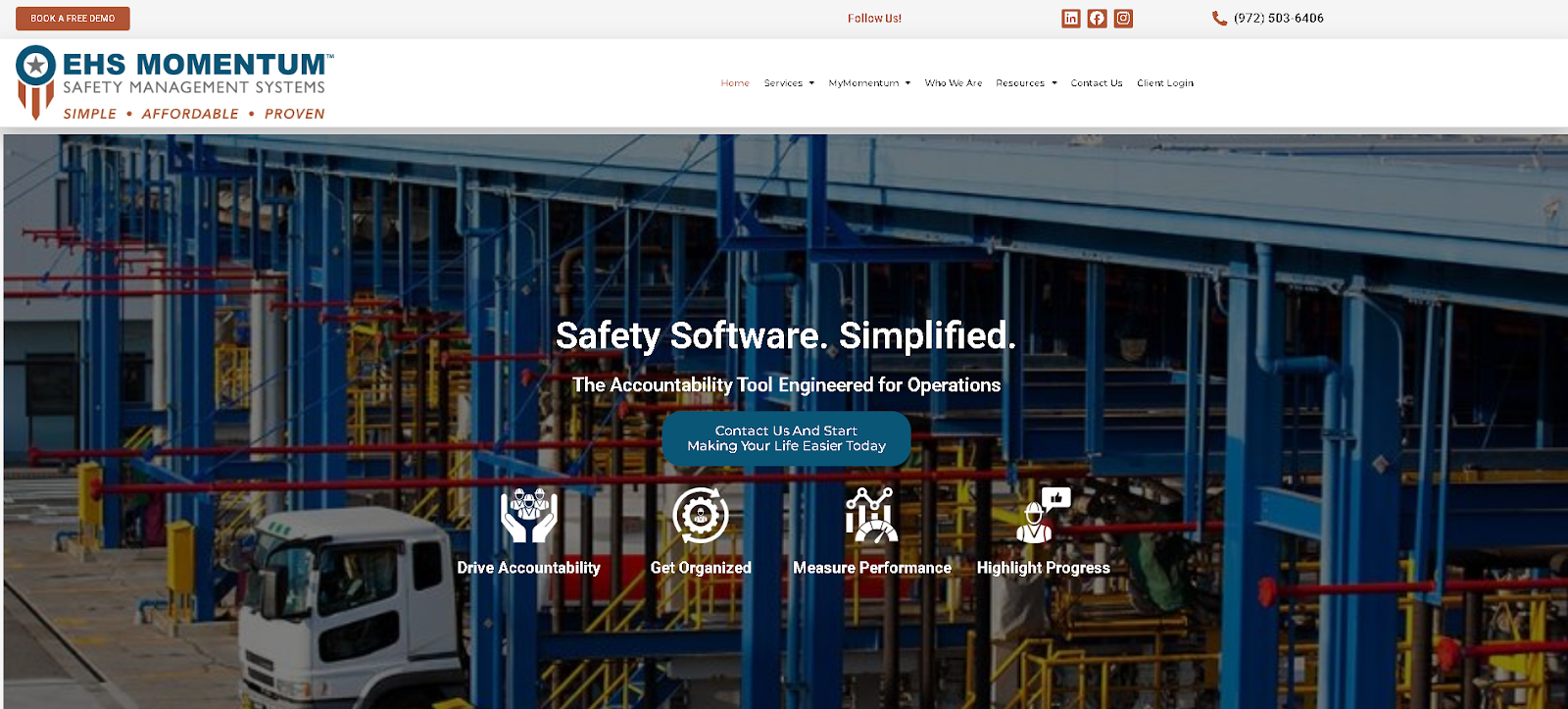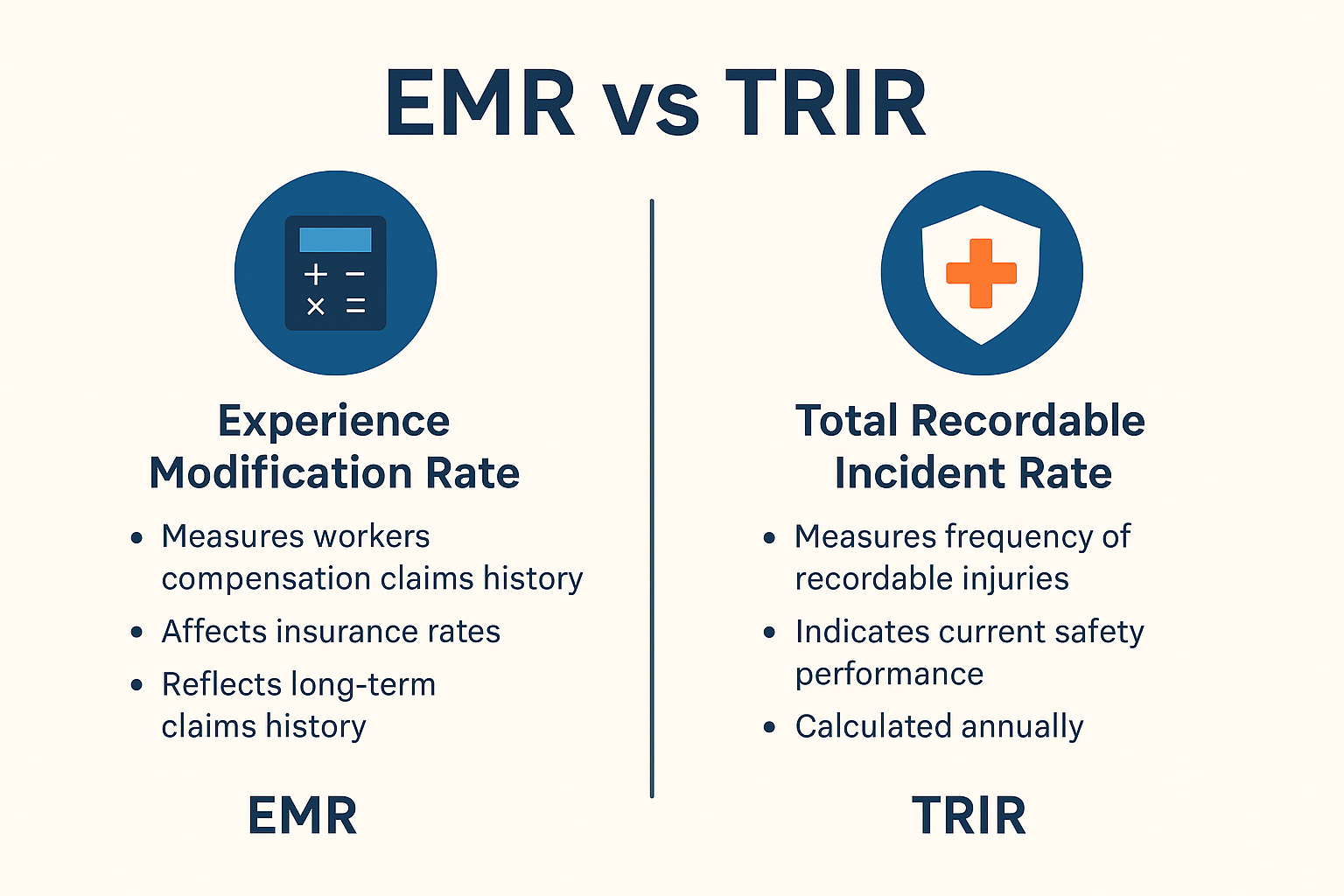OSHA compliance in the workplace means following the safety rules set by the Occupational Safety and Health Administration.
These rules are designed to prevent workplace injuries, illnesses, and deaths by requiring employers to fix hazards, provide safety training, and use protective equipment. OSHA compliance applies to most private businesses and many public agencies.
Meeting these standards helps create safer work environments and protects employees from harm. It also helps employers avoid penalties and build a strong safety culture.
In this article, you’ll learn what OSHA compliance includes, why it matters, and how to meet the requirements in your workplace.
What Is Occupational Safety and Health Act (OSHA) Compliance?
The Occupational Safety and Health Act requires businesses to keep their workplaces free from known dangers that could lead to serious injuries or illnesses.
To comply with OSHA, employers should plan ahead, spot hazards early, and fix problems before workers get hurt. Compliance involves setting clear safety procedures, offering the right equipment, and providing proper employee training.
It also includes keeping records of injuries and illnesses, and making sure all employees understand the risks involved in their work.
Meeting OSHA standards helps protect employees and shows that a company takes workplace safety seriously. It also helps avoid OSHA citations, legal trouble, and costly workplace injuries that can hurt both workers and business operations.
In Which States Does OSHA Compliance Apply?
OSHA compliance applies in every U.S. state, but the way it’s managed depends on whether a state follows the federal OSHA program or has an OSHA-approved state plan.
Some states have chosen to operate their own safety and health enforcement programs (such as New York, Illinois, New Jersey, Maine and Connecticut). Still, these cover only public sector employees, not the private sector.. Others rely entirely on the Occupational Safety and Health Administration to enforce the rules.
There are two enforcement types:
- Federal OSHA jurisdiction – Used in 29 states and two territories. These areas are directly overseen by the federal agency for private-sector workers.
- State OSHA plans – Approved plans are active in 27 states and two territories. These plans must match or exceed federal rules and often cover public sector employees, including those in state and local government roles.
If you operate a business in the U.S., your responsibilities remain the same. You should follow national or state safety rules, provide required employee training, maintain a workplace free from known risks, and comply with OSHA inspections and reporting duties.
What are OSHA Requirements?
OSHA requirements outline what employers must do to keep workers safe and healthy on the job. These rules are designed to prevent workplace injuries, protect employees from recognized hazards, and promote strong safety habits across different industries.
While the exact duties vary by job type and environment, all covered employers should follow general safety rules and provide the tools, training, and information employees need to stay safe.
Hazard Communication
OSHA expects employers to inform workers about the hazardous chemicals they may encounter on the job.
Workers need clear guidance to recognize health hazards, understand the risks, and know how to protect themselves. Many serious injuries and illnesses result from poor chemical handling or a lack of training.
A strong hazard communication program includes a written plan that outlines how chemical safety is managed across the site, labeling that uses clear and consistent warnings on every container, and safety data sheets (SDS) that provide up-to-date reference information for all chemicals.
It also involves training workers to read labels and SDS documents and reviewing materials when new risks appear.
Clear instructions reduce confusion and support safe handling. Well-informed teams help protect employees and allow businesses to comply with OSHA without delays.
Emergency Action Plan
Every job site must prepare for fires, severe weather, chemical leaks, and other dangerous events. A written Emergency Action Plan (EAP) gives workers a step-by-step guide to follow when problems happen.
A complete EAP should cover:
- Evacuation steps – Provide clear instructions for getting out quickly.
- Escape routes – Keep all emergency exits well-marked and accessible.
- Emergency contacts – Identify who manages the response.
- Assigned roles – Define who leads, who reports, and who assists others.
- Reporting procedures – Explain how to report emergencies.
- Drills – Practice the plan regularly with the full team.
Every second counts during a crisis. A strong plan reduces confusion, prevents workplace injuries, and keeps operations organized under pressure.
Fire Safety
Fires in the workplace demand preparation, not just reaction. OSHA outlines clear steps every employer must take to reduce the risk and prepare the team. Companies that ignore fire risks face higher chances of injury, shutdowns, and penalties.
An effective safety plan starts with a written strategy that pinpoints risks and outlines clear fixes. Flammable materials should stay in secure, labeled spots away from heat sources. Fire alarms, extinguishers, and sprinklers must stay in working order through regular checks.
Emergency exits and pathways should stay open and clearly marked at all times. Routine inspections help catch safety issues before they become real threats. Finally, all staff should get hands-on fire safety training so they know what to do in an emergency.
Strong fire safety practices save lives, prevent workplace accidents, and support full OSHA compliance across every department.
Exit Routes
Exit routes must stay clear, open, and easy to reach at all times. OSHA outlines specific rules for how workers must exit during a fire, explosion, or any emergency. Any delay, confusion, or blocked door could lead to injury or worse.
Employers must follow these steps to meet OSHA’s exit route expectations:
- Mark exits clearly – Every emergency exit must be visible with lighted signs.
- Keep paths unobstructed – No equipment, storage, or furniture should block escape routes.
- Maintain proper lighting – Workers must be able to find exits even in poor visibility.
- Check width and height – Exit paths must be wide and tall enough to fit everyone safely.
- Post evacuation maps – Show escape paths throughout the building.
- Inspect regularly – Test doors and paths to confirm they open easily and stay clear.
Exit planning prevents panic and supports fast movement in dangerous situations. Every workplace must prepare for sudden events and give people a clear way out.
Working Surfaces
Every walking or standing surface must support safe movement. Uneven flooring, spills, or poor equipment setup increase the risk of falls. OSHA expects employers to take action before injuries happen.
Regular floor and walkway checks should catch issues like spills, loose tiles, or stray equipment. Guardrails belong anywhere there’s a risk of falling, especially on elevated platforms or ladders.
Workspaces stay safer when walkways stay clear, with tools, cords, and debris removed. Mats and rugs should lie flat and stay in place to avoid trips. If any surface cracks or breaks, it needs fast repair to avoid bigger hazards.
Workers rely on solid ground. Preventing slips and falls improves workplace safety and helps maintain strong OSHA compliance across all departments.
Medical and First Aid
When injuries occur, a fast response matters. OSHA requires businesses to provide first-aid supplies and trained responders based on the risks in their environment. Ignoring this rule leads to delays in medical treatment and increases the severity of workplace injuries.
Follow these steps to stay ready:
- Stock first-aid kits – Match the supplies to the hazards of your worksite.
- Train responders – Teach selected staff how to treat wounds, burns, or shock.
- Post contact info – Display names and numbers for off-site medical support.
- Check supplies – Replace expired items and restock often.
- Respond quickly – Take immediate action when injuries occur.
- Document all responses – Keep records of care and report serious events.
Prepared workplaces limit damage and avoid long recovery times. Medical readiness keeps employees safer and reinforces your duty to protect them under OSHA law.
Machine Guarding
Machines with exposed moving parts can cause work-related injuries like crushed fingers, amputations, and burns. The OSHA compliance officer reviews how machines are protected and verifies that employers meet the required safety and health standards.
Machines such as saws, presses, and rollers must be guarded with approved equipment that blocks body parts from entering danger zones.
Proper machine guarding prevents serious work-related injuries and supports a safe workplace. Safety professionals’ inspections often focus on whether machines include the right controls and shields.
Fixed guards stay in place to block moving parts and keep hands clear. Interlock systems shut off the machine if someone opens or removes a guard, which cuts off access to potential hazards. Two-hand controls force the operator to use both hands to start the machine, which lowers the risk of contact.
Without physical protection, even basic equipment can become dangerous. Guarding sharp or crushing parts helps prevent workplace accidents, improves safety awareness, and keeps operations OSHA compliant.
Electrical Hazards
Unchecked wiring and poor design lead to electric shocks, fires, and even deaths. Every safe workplace must include systems that control exposure to live wires, sparks, and heat. OSHA guidelines outline how to manage these risks.
Following electrical safety guidelines protects workers from shocks, burns, and fatal mistakes. A sound system design prevents overloaded circuits and avoids grounding issues that lead to electrical hazards. Proper insulation and certified equipment reduce direct contact with live wires.
Maintenance schedules keep panels, outlets, and breakers in good shape before problems arise. Lockout and tagout procedures disconnect machines from power during servicing to prevent accidents.
OSHA requires training for authorized workers to recognize risks, use equipment correctly, and follow safety practices that support a safe workplace.
Personal Protective Equipment (PPE)
Hazards don’t always come from machines or wires. Sometimes, workers face airborne dust, flying debris, or hazardous materials that require personal protection. OSHA requires businesses to provide PPE when other methods cannot fully control a threat.
Key PPE practices include:
- Job hazard analysis – Identify tasks that call for eye, hand, or head protection.
- Proper gear – Supply items such as safety glasses, hard hats, gloves, and masks.
- Fit checks – Make sure the equipment fits correctly and comfortably.
- Replacement plans – Remove worn-out or damaged gear without delay.
- Clear instructions – Explain correct use and maintenance as part of broader safety measures.
When gear is matched to each task, the result is fewer injuries and better results. Supplying and managing PPE helps employers protect workers and stay fully aligned with OSHA’s expectations.
Respirators
Airborne risks often go unnoticed until they cause long-term harm. Jobs that involve sanding, spraying, welding, or cleaning chemicals can expose workers to toxic fumes.
OSHA requires employers to supply proper respirators when ventilation or other controls can’t fully remove airborne risks. An OSHA inspector may check if the gear matches the hazard and whether workers use it the right way.
Begin by assessing areas that may expose workers to harmful gases, fumes, or dust. Based on the findings, select respirators that fit the task and materials involved. Fit testing confirms that each mask seals tightly to the wearer’s face.
Maintenance teams should clean and inspect the gear regularly to keep it safe and functional. Safety professionals also train workers on how to put on, remove, and store respirators correctly.
Supplying proper gear prevents serious exposure and supports employees’ safety in jobs with high respiratory risk.
Noise
Loud machinery and tools may not seem dangerous at first, but long exposure causes permanent damage. Hearing loss from work can’t be reversed, which is why OSHA includes it in its broader effort to reduce workplace fatalities and long-term harm.
The safety guidelines for noise include:
- Measuring sound levels – Document which areas cross safe thresholds.
- Offering protection – Provide earplugs or earmuffs and make sure they fit.
- Shifting tasks – Rotate employees to reduce total exposure time.
- Maintaining equipment – Fix noisy machines to lower their output.
- Education – Explain the signs of hearing loss and how to act early.
Following these steps helps preserve hearing and aligns with OSHA’s larger focus on noise-related injury and illness data.
Confined Spaces
Some jobs require workers to enter tanks, silos, or underground vaults. These areas often lack ventilation, involve tight spaces, and contain workplace hazards that can go unnoticed. OSHA defines these as confined spaces and places strict rules on how to enter and work inside safely.
Employers should control access to confined spaces that pose serious risks. To start, evaluate the area for toxic gases, lack of oxygen, or physical hazards. If dangers exist, limit entry, post clear warning signs, and ventilate the space to lower exposure.
A trained attendant stays outside the space, ready to respond during an emergency. Workers entering the area should use safety gear such as harnesses, gas detectors, and communication devices.
These safety practices protect against severe incidents and reflect the shared employer responsibilities laid out in OSHA standards.
Blood or Other Potentially Infectious Materials
Hospitals, clinics, janitorial teams, and lab workers may come in contact with human blood or fluids during daily work. OSHA requires a written plan that helps limit this risk and keeps people safe.
The plan must reflect how OSHA covers exposure in jobs with biological risk, especially when body fluids may contain harmful pathogens.
To reduce the danger, provide PPE such as gloves, face shields, and gowns. Sharps and contaminated items go into clearly marked, approved containers to prevent cross-contamination.
If exposure happens, the affected worker should receive prompt medical attention. Employers also keep detailed illness records and update the OSHA log as required. Together, these efforts strengthen employee safety and meet OSHA requirements for exposure control.
How to Comply with OSHA Regulations?
Every business must take action to meet OSHA compliance requirements and reduce harm. The foundation begins with a written safety and health program that matches job duties and risk levels.
Companies that operate in hazardous environments should develop robust safety programs and consult with well-trained industrial hygienists to evaluate exposure concerns.
To assure compliance, employers should:
- Identify and control hazards through regular safety inspections
- Launch job-specific training programs based on training requirements
- Keep an accurate OSHA log of injuries and illnesses
- Record every illness requiring medical treatment
- Clearly inform employees about their rights, responsibilities, and reporting steps
- Contact the nearest OSHA office for clarification or guidance
- Review and update safety policies whenever changes occur
During inspections, an OSHA inspector checks safety plans, inspects equipment, and looks for violations. If businesses ignore rules, OSHA enforces penalties that may include citations and fines. These actions protect workers from injuries, illnesses, and long-term exposure risks.
Strong planning and full documentation help maintain safe operations. In every setting, OSHA compliance ensures that workers can do their jobs in a safer, more prepared environment.
OSHA Violations and Enforcement
OSHA holds employers accountable when safety rules are ignored. The agency investigates complaints, conducts routine inspections, and follows up on reported incidents.
Violations can lead to warnings, fines, or even shutdowns. Understanding how OSHA enforces its rules helps businesses respond quickly and avoid penalties.
Inspection Process
OSHA inspections begin for many reasons. Common triggers include worker complaints, recent injuries, referrals, or routine scheduling based on industry risk. Surprise visits are normal, so employers must stay prepared at all times.
Inspectors follow a clear process:
- Opening conference – The OSHA inspector explains why the inspection is taking place.
- Walkthrough – The inspector examines work areas, takes notes, and observes conditions.
- Interviews – Workers may answer questions about training, equipment, and daily tasks.
- Document review – The inspector checks safety plans and the OSHA log of injuries and illnesses.
- Closing conference – Employers receive a summary of findings and next steps.
Businesses that fix hazards quickly, document everything, and involve workers in safety planning reduce the risk of citations. Preparedness helps every team stay aligned with the law before inspectors arrive.
Penalties for Violations
OSHA applies penalties when employers ignore safety standards. Fines vary based on how severe the issue is and how long it remains unresolved. Failing to correct problems after the inspection increases the cost.
Penalty amounts depend on several factors. OSHA considers the type of violation and weighs how likely the hazard is to cause injury or death. A quick action may reduce penalties, while delays can make things worse.
Businesses with past violations often face higher fines. If problems go unresolved beyond the correction deadline, that adds to the cost. Each of these factors influences how OSHA implements penalties and encourages employers to act quickly and responsibly.
For 2025, OSHA increased its maximum civil penalties, effective January 15. The maximum fine for serious and other-than-serious violations is now $16,550 per violation. For willful or repeated violations, the penalty can reach up to $165,514 per violation. Failure-to-abate fines also increased to $16,550 per day beyond the abatement date.
OSHA sends an official notice that lists each violation and the fine. Businesses can contest the decision, fix the problem, or both. Strong documentation and quick correction often reduce the penalty amount.
Make Workplace Safety Easier Than Ever With EHS Momentum

Staying OSHA compliant takes more than good intentions. EHS Momentum simplifies the entire process with one mobile-first platform built for real-world safety needs. From inspections to training, everything stays organized in one place.
EHS Momentum helps with:
- Incident reporting – Log, track, and resolve issues fast.
- Training and audits – Manage all training programs and safety checks.
- Document control – Store policies, logs, and records securely.
- Corrective actions – Assign tasks and follow up in real time.
- Visibility – Give leaders and teams a clear view of compliance progress.
The platform supports your safety and health program and helps maintain full OSHA compliance without the usual hassle.
Book a demo to see how it works!
FAQs About OSHA Compliance
What does it mean to be OSHA compliant?
Being OSHA compliant means a business follows all OSHA requirements to create a safe and healthy workplace. It includes hazard prevention, employee training, proper recordkeeping, and meeting inspection standards.
How do I make sure I am OSHA compliant?
To stay OSHA compliant, evaluate workplace risks, train employees, keep accurate records, and respond quickly to hazards. An OSHA compliance officer may inspect your site at any time, so plans and documentation must stay current.
What must employers do to comply with OSHA?
Employers must identify hazards, provide safety gear, hold training sessions, involve employees, and follow reporting rules. Even companies with fewer employees or in certain low-hazard industries must meet the same basic safety steps and encourage worker participation.
What are OSHA compliance regulations?
OSHA compliance regulations refer to the set of federal safety rules that businesses must follow to protect workers. These laws apply across industries and cover topics like training, exposure limits, emergency plans, and workplace inspections.







